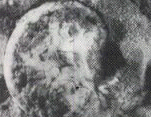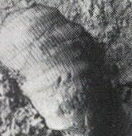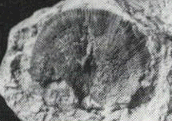KAIBAB FORMATION
 |
Fig.
25
|
The Kaibab Formation, the cap rock of the Grand Canyon, the youngest
Paleozoic rock unit on the southern Colorado Plateau, is composed of a
variety of lithologic types that were deposited within a complex
shallow-marine setting during the Permian. Marine invertebrate fossils
are abundant in the Kaibab Formation. Brachiopods, fenestrate and
ramose bryozoans, crinoids, siliceous sponges, and solitary corals are
commonly found in western sections. Fragments of trilobites, ostracods,
foraminifers, and molluscs are rare. In eastern sections, molluscan
fauna characterized by pelecypods and poorly preserved gastropods
dominate. Lateral change in faunal assemblages reflects a shoreward
transition to increasingly restricted-marine environments.
Shallow-water, low-energy levels, limited water circulation, elevated
temperature, and salinity characterize these environments. An important
note is that many of the fossil forms in the Kaibab Formation became
extinct toward the end of the Permian (e.g., trilobites).



 Fig. 26 - Fossil types representitve of the Kaibab Formation. From left to right: coiled gastropd (Bellerophontid), solitary rugose coral, productid brachiopod (Derbyia), and productid
brachiopod (Peniculauris bassi).
Fig. 26 - Fossil types representitve of the Kaibab Formation. From left to right: coiled gastropd (Bellerophontid), solitary rugose coral, productid brachiopod (Derbyia), and productid
brachiopod (Peniculauris bassi).







